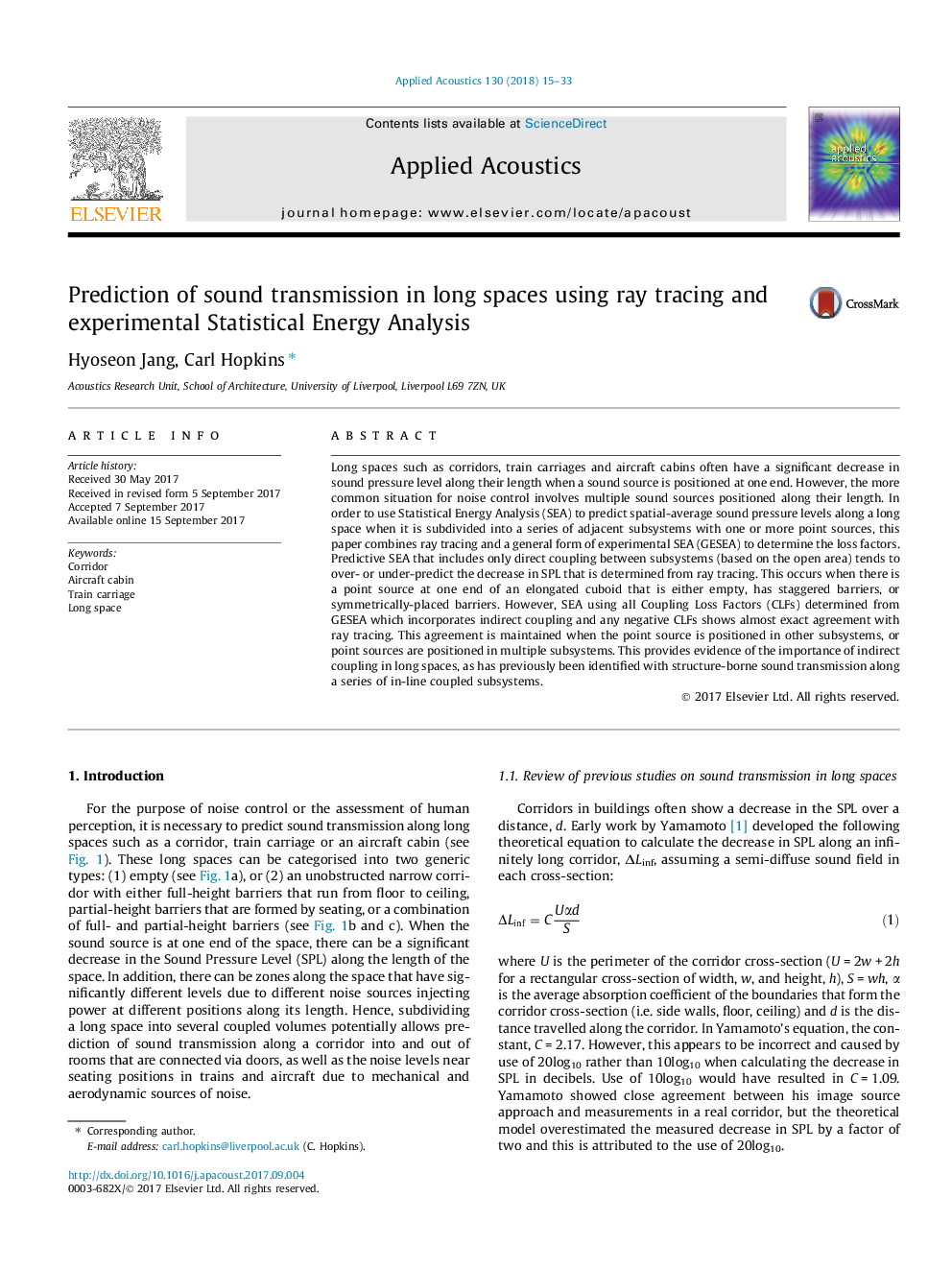| Article ID | Journal | Published Year | Pages | File Type |
|---|---|---|---|---|
| 5010679 | Applied Acoustics | 2018 | 19 Pages |
â¢Using predictive and experimental Statistical Energy Analysis to model long spaces.â¢Relevant to corridors, train carriages, aircraft cabins.â¢Evidence that considering only direct coupling is inadequate.â¢Evidence showing the importance of including indirect coupling.â¢Experimental validation using a long corridor with and without staggered barriers.
Long spaces such as corridors, train carriages and aircraft cabins often have a significant decrease in sound pressure level along their length when a sound source is positioned at one end. However, the more common situation for noise control involves multiple sound sources positioned along their length. In order to use Statistical Energy Analysis (SEA) to predict spatial-average sound pressure levels along a long space when it is subdivided into a series of adjacent subsystems with one or more point sources, this paper combines ray tracing and a general form of experimental SEA (GESEA) to determine the loss factors. Predictive SEA that includes only direct coupling between subsystems (based on the open area) tends to over- or under-predict the decrease in SPL that is determined from ray tracing. This occurs when there is a point source at one end of an elongated cuboid that is either empty, has staggered barriers, or symmetrically-placed barriers. However, SEA using all Coupling Loss Factors (CLFs) determined from GESEA which incorporates indirect coupling and any negative CLFs shows almost exact agreement with ray tracing. This agreement is maintained when the point source is positioned in other subsystems, or point sources are positioned in multiple subsystems. This provides evidence of the importance of indirect coupling in long spaces, as has previously been identified with structure-borne sound transmission along a series of in-line coupled subsystems.
